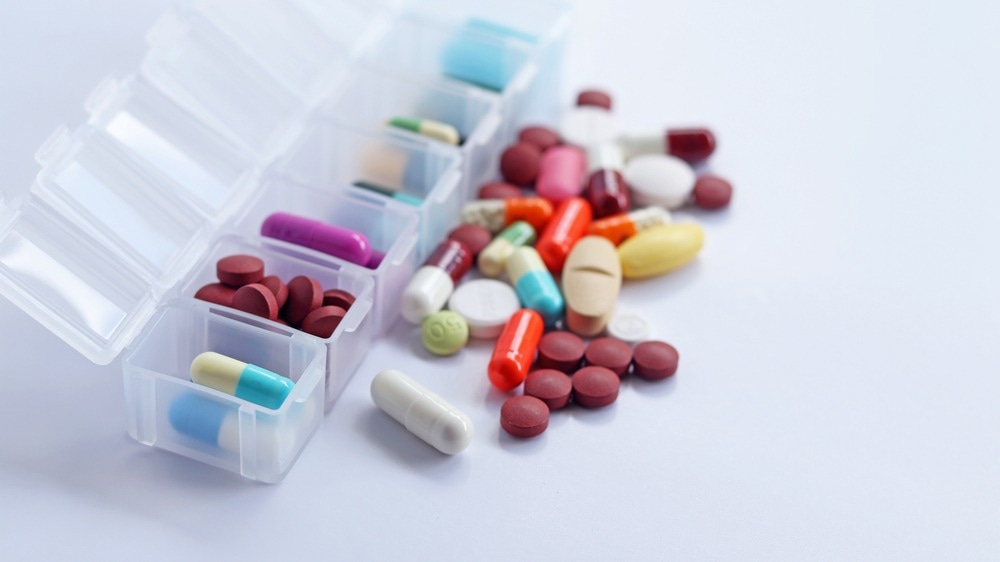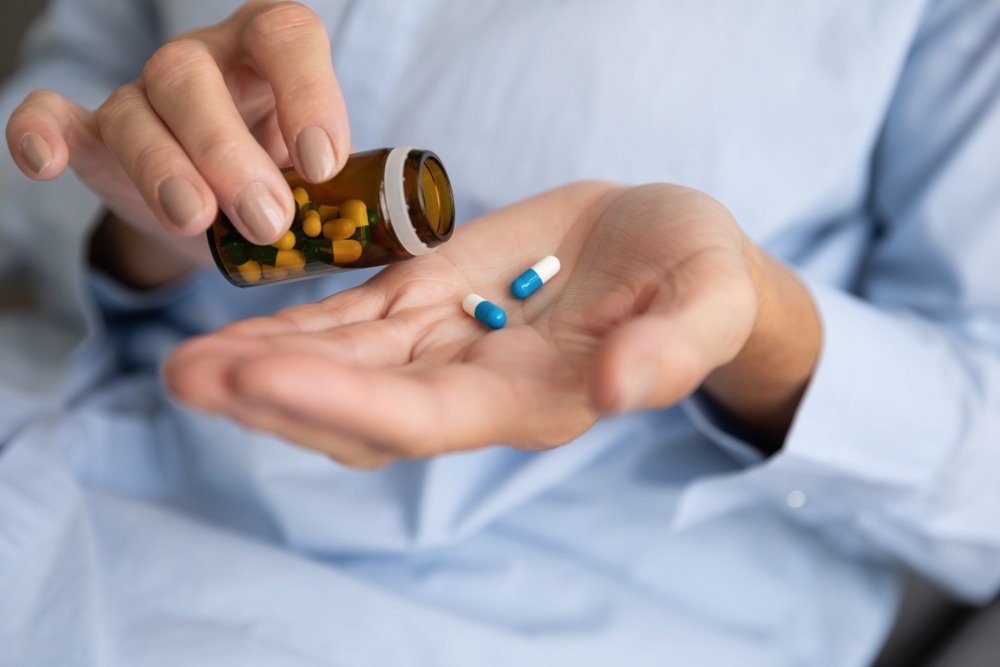The importance of oral dosage forms in drug delivery
Advancements in drug release technologies
Enhancing drug absorption: innovations and strategies
Impact on patient compliance and experience
Challenges and considerations in development
Case studies: success stories in oral dosage form innovation
Future trends in oral drug delivery systems
Conclusion
References
Further reading
The oral dosage form is the most natural, safe, and convenient route for administering drugs compared to other routes.1 This article will provide an overview of innovative technologies and materials used to overcome challenges in this area, including drug absorption, drug release, as well as patient compliance, and overall efficacy.

Image Credit: Arpon Pongkasetkam/Shutterstock.com
The importance of oral dosage forms in drug delivery
Most drugs in the U.S. are taken orally because these oral dosage forms have a significant systemic effect on the body after being absorbed from different surfaces along the gastrointestinal tract (GIT).1
However, with challenges faced by oral dosage forms, some innovations have shown great potential in achieving absorption and availability compared to parenteral routes, which is especially critical for macromolecular drugs, including peptides and proteins that have poor absorption even with the use of permeation enhancers.2
Advancements in drug release technologies
Recent technological advancements have been developed to improve drug release from oral dosage forms.3
Nanoparticles have shown significant promise in drug delivery, with both organic and inorganic nanoparticles being shown to improve the tolerability of drugs, as well as pharmacological specificity, targeting, and biodegradability.3
There have been many nanocarriers that have been used within oral drug designs, with a majority demonstrating advantages such as protection from the harsh conditions of the GIT, increasing absorption into the circulatory system, precise targeting into specific sites, and controlled drug release.3
Enhancing drug absorption: innovations and strategies
Many formulation strategies have been explored to enhance drug absorption in the GIT, including permeation enhancers, nanosized carriers, and modification of drug structures.2
The use of permeation or absorption enhancers in drug formulations can improve the absorption of pharmacologically active drugs and can increase absorption through enhancing membrane permeation instead of increasing solubility.4
Other innovations include microfabricated smart devices, which are comprised of advanced manufacturing approaches such as microfabrication and 3D printing to produce pioneering oral delivery devices. Subsequently, this can lead to precise control over minute devices, as well as discovering novel mechanisms underlying interactions between materials and cells.2
An example includes the use of silicon nanowires on microbeads with large aspect ratios, which has the potential to increase adhesion to epithelial cells. These innovative particles have outperformed common mucoadhesive materials with an increased time frame in the GIT by 10-fold, compared to microbeads without silicon nanowires in a beagle dog animal model.2
Interestingly, a pharmaceutical innovation using a “robotic pill” has been developed, which consists of an enteric-coated capsule loaded with a folded poly(ethylene) balloon and a hollow and dissolvable needle constructed using PEG. This can be used by packaging sterile solid-form peptide drugs inside the needle.
Once the formulation is released in the intestine, a reaction inside the balloon can cause its inflation and subsequent piercing of the intestinal wall for extended-release and absorption of the drug.2
Impact on patient compliance and experience
Innovations that aim to increase the absorption of oral dosage forms and control drug release technology may be critical for improving patient compliance and overall treatment experience.3

Image Credit: fizkes/Shutterstock.com
Oral drug delivery is known for its easy application, painlessness, low expenditure, wide drug distribution channel, and high patient compliance. However, if the efficacy of many oral medicines is limited, other routes may be more effective depending on the drug, reducing patient compliance.3
Additionally, the patient’s age may be a significant influence on the type of dosage from which the drug may be administered, with liquids instead of solids being preferential for infants and children under five years of age. Some liquid oral dosage forms are also provided with a flavor to aid in the consumption of medicine, which may be more difficult with younger children; dosage volumes can also be varied due to challenges with swallowing medicine.1
Challenges and considerations in development
Some challenges faced by pharmaceutical companies when developing innovative oral dosage forms include biochemical and physical barriers of the GIT that can limit absorption due to the short residence time.
Additionally, many macromolecular drugs can face denaturation and chemical denaturation in the stomach and intestine; the acidic conditions of the stomach are able to denature most proteins, while in the small intestine, bile salts and proteases can destabilize biologics.2
A range of excipients, such as permeation enhancers, as well as drug delivery technologies, such as nanoparticles, have demonstrated high efficacy in preclinical models. However, these have rarely advanced into clinical trials. Additionally, the most common permeation enhancers that have been included in clinical trials, such as salcaprozate sodium and sodium caprylate have unfortunately achieved a low oral availability rate of approximately 1%.2
There are also manufacturing difficulties with pharmaceutical innovations, such as for the “robotic pill”, which has a complex assembly process and so sterile manufacturing, as well as regulations, may be challenging.2
Case studies: success stories in oral dosage form innovation
With the pharmaceutical industry researching potential improvements on currently available medicinal products to increase safety and efficacy, novel drug applications have shown potential when combining two or more active substances. This approach may increase the patient’s drug tolerance, improve side effects, as well as increase patient compliance and efficacy of the drug itself.5
Some studies have demonstrated that taking combined active substances in medicinal products may be more effective than using individual active agents. These types of fixed-dose combination (FDC) formulations have grown on the market, with many being available due to complimentary mechanisms of more than one active substance working simultaneously and producing a synergistic effect.5
This subsequently leads to lower doses of individual drugs, which also reduces the frequency of side effects, while fewer tablets and a simplified dosing schedule may lead to higher patient compliance.5
Future trends in oral drug delivery systems
The future of oral dosage form technology and drug release technology may be promising, with various advancements being explored for increased drug absorption and extended release of drugs with higher residence time in the GIT.2
Innovations such as the “robotic pill” may be a potential breakthrough that facilitates drug permeation with specially controlled drug release technology that deploys microneedles in the GI tract. With microneedles being explored widely for painless transdermal delivery, this therapeutic company, along with other researchers, may be on the brink of achieving increased drug absorption with oral dosage forms.2
Conclusion
There are many significant benefits of these advanced formulations for oral dosage forms in patients as well as the healthcare industry. With this preferred route of drug administration having high patient compliance but challenges in the absorption of active substances, the exploration of novel technology is a necessity to surpass physiological barriers.2
With many novel innovations being in the proof-of-concept and preclinical stages, continuous research and development in this area are required to address current challenges and allow clinical translation.2
References
- Alexander K. Dosage forms and their routes of administration. Pharmacology. Published online 2009:9-29. doi:10.1016/b978-0-12-369521-5.00002-6
- Luo Z, Paunović N, Leroux J-C. Physical methods for enhancing drug absorption from the gastrointestinal tract. Advanced Drug Delivery Reviews. 2021;175:113814. doi:10.1016/j.addr.2021.05.024
- Lou J, Duan H, Qin Q, et al. Advances in Oral Drug Delivery Systems: Challenges and opportunities. Pharmaceutics. 2023;15(2):484. doi:10.3390/pharmaceutics15020484
- Aungst BJ. Absorption enhancers: Applications and advances. The AAPS Journal. 2011;14(1):10-18. doi:10.1208/s12248-011-9307-4
- Janczura M, Sip S, Cielecka-Piontek J. The development of innovative dosage forms of the fixed-dose combination of active pharmaceutical ingredients. Pharmaceutics. 2022;14(4):834. doi:10.3390/pharmaceutics14040834
Further Reading
Last Updated: Mar 14, 2024